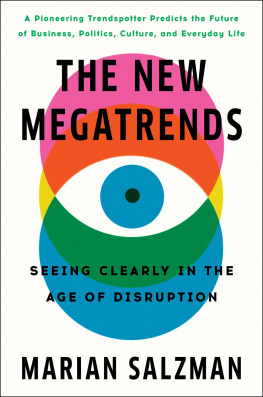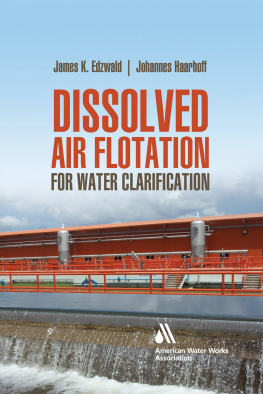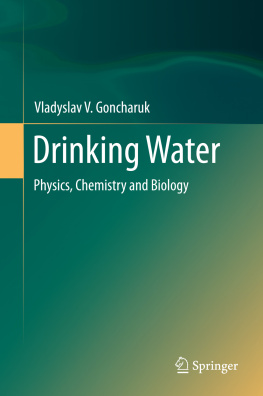James Salzman - Drinking Water: A History
Here you can read online James Salzman - Drinking Water: A History full text of the book (entire story) in english for free. Download pdf and epub, get meaning, cover and reviews about this ebook. year: 2013, publisher: Gerald Duckworth & Co Ltd, genre: Art. Description of the work, (preface) as well as reviews are available. Best literature library LitArk.com created for fans of good reading and offers a wide selection of genres:
Romance novel
Science fiction
Adventure
Detective
Science
History
Home and family
Prose
Art
Politics
Computer
Non-fiction
Religion
Business
Children
Humor
Choose a favorite category and find really read worthwhile books. Enjoy immersion in the world of imagination, feel the emotions of the characters or learn something new for yourself, make an fascinating discovery.

- Book:Drinking Water: A History
- Author:
- Publisher:Gerald Duckworth & Co Ltd
- Genre:
- Year:2013
- Rating:4 / 5
- Favourites:Add to favourites
- Your mark:
- 80
- 1
- 2
- 3
- 4
- 5
Drinking Water: A History: summary, description and annotation
We offer to read an annotation, description, summary or preface (depends on what the author of the book "Drinking Water: A History" wrote himself). If you haven't found the necessary information about the book — write in the comments, we will try to find it.
Drinking Water: A History — read online for free the complete book (whole text) full work
Below is the text of the book, divided by pages. System saving the place of the last page read, allows you to conveniently read the book "Drinking Water: A History" online for free, without having to search again every time where you left off. Put a bookmark, and you can go to the page where you finished reading at any time.
Font size:
Interval:
Bookmark:

This edition first published in hardcover in the United States and the United Kingdom in 2012 by Overlook Duckworth, Peter Mayer Publishers, Inc.
New York
141 Wooster Street
New York, NY 10012
www.overlookpress.com
For bulk and special sales, please contact
London
90-93 Cowcross Street
London EC1M 6BF
www.ducknet.co.uk
Copyright 2012 by James Salzman
All rights reserved. No part of this publication may be reproduced or transmitted in any form or by any means, electronic or mechanical, including photocopy, recording, or any information storage and retrieval system now known or to be invented, without permission in writing from the publisher, except by a reviewer who wishes to quote brief passages in connection with a review written for inclusion in a magazine, newspaper, or broadcast.
ISBN 978-1-46830-675-0

JAMES SALZMAN holds the Samuel Mordecai chair in the School of Law and the Nicholas Institute Professor chair in the School of the Environment at Duke University. He has written extensively on the topics of environmental conservation, population growth, and climate change. He lives in Durham, North Carolina.
Visit www.drinkingwaterhistory.com
W hen we turn on the tap or twist open a tall, cold plastic bottle, we might not give a second thought to where our drinking water comes from. But how it gets from the ground to the glass is far more complex than we might think. With concerns over pollution and new technologies like fracking, is it safe to drink tap water? Should we feel guilty buying bottled water? Is the water we drink vulnerable to terrorist attacks? With springs running dry and reservoirs emptying, where is our water going to come from in the future?
In Drinking Water, Duke University professor and environmental policy expert James Salzman shows how drinking water highlights the most pressing issues of our timefrom globalization and social justice to terrorism and climate changeand how humans have been wrestling with these problems for centuries. From the aqueducts of Rome to the revolutionary sewer system in nineteenth-century London to todays state-of-the-art desalination plants, safety and scarcity of water have always been one of societys most important functions.
Bloody battles over control of water sources stretch as far back as the Bible, yet even today such conflicts routinely make front-page headlines all around the world. Only fifty years ago, selling bottled water sounded as ludicrous as selling bottled air, but now store shelves are stocked with dozens of different focus-group-tested brandsmany of which are just repackaged tap water. Provocative, insightful, and above all fun to read, Drinking Water weaves all of these issues together to show just how complex a simple glass of water can be.
What do Romes aqueducts, Napoleons death, and the pilgrimage site of Lourdes have in common? All involve water: the leading ingredient of our bodies, essential for our daily lives, and the subject of innumerable struggles. Even if you prefer to drink wineits mostly water anywayyoull enjoy this book.
JARED DIAMOND, Pulitzer-Prize-winning author of Guns, Germs, and Steel
Instead of buying your next twelve-pack of bottled water, buy this fascinating account of all the people who spent their lives making sure youd have clean, safe drinking water every time you turned on the tap. BILL MCKIBBEN, author of Eaarth: Making a Life on a Tough New Planet
In his deeply thorough, thought-provoking and ultimately hopeful book, James Salzman shows why water security and quality are set to boil to the surface of world politics.
JOHN ELKINGTON, author of The Green Consumers Guide and Cannibals with Forks: The Triple Bottom Line of 21st Century Business
Meticulously researched, grandly conceived, and splendidly executed, Drinking Water takes a prosaic subject and makes it endlessly fascinating. Smart, witty, and perceptive, Drinking Water is essential reading. ROBERT GLENNON, author of Unquenchable: Americas Water Crisis and What To Do About It
Salzman has produced a gem of uncommon valuea fascinating book which slips in among its engaging stories their weighty implications for policy.
WILLIAM K. REILLY, former Administrator of the Environmental Protection Agency and former President of the World Wildlife Fund
Drinking Water effortlessly guides us through a fascinating world we never consider. Even for people who think they know water, there is a surprise on almost every page.
CHARLES FISHMAN, bestselling author of The Big Thirst and The Wal-Mart Effect
Immensely readable, the book weaves one entertaining story after another to show how we have thought about, valued, protected, and provided this most precious of all liquids. PAUL R. EHRLICH, author of The Population Bomb and The Dominant Animal
To Heather
T HE COVER OF THE A UGUST 2011 ISSUE OF Readers Digest features a picture of a glass of water with a question superimposed in bold type: How Safe Is Our Water? To make sure the interested reader is left in no doubt, an arrow connects a product warning in bright red type to the glass. The warning says, MAY CONTAIN: ROCKET FUEL, BIRTH CONTROL PILLS, ARSENIC, AND MORE SHOCKING INGREDIENTS .
The same months cover of the trendy magazine Fast Company features a head shot of the movie star Matt Damon. No mention is made of his current starring role or love life. Instead, the attention-grabbing title reads, Matt Damon and His Global War for Water.
Water has become big news, and not just in corporate board-rooms or city halls. There is likely little overlap in the audiences of Readers Digest and Fast Company (indeed, it would be hard to come up with two titles less likely to be bought by the same person), but editors of both clearly think that their readers care about drinking water. At the mention of drinking water people immediately become engaged. Is it safe to drink tap water? Should we feel guilty buying bottled water? Is our water vulnerable to terrorist attacks? The issues surrounding drinking water speak to a remarkably broad community, and they always have.
The term drinking water is a wonderfully ambiguous pairing of words. Drinking can be an adjective, describing the many natures of this clear liquid. This water has special, vital qualities. Its not ocean water, not dish water, not swamp water. It is potable watersafe enough to consume without getting sick. A rare liquid, one that will become less and less taken for granted in the future.
Or drinking can connote an actiona specific intent to drink water rather than freeze water, sell water, wash with water. And if the water is for the act of drinking, then who gets to drink, when can they drink, and where can they drink?
Such ambiguity is entirely appropriate for one of the few human actions and conditions that are truly universal. Some people choose to eat red meat; some eat only fish; some eat no meat at all. But everyone drinks water. And, though a clear liquid, it contains many meanings. While nothing could seem simpler than a clear glass of water, it is difficult to find a more complex or fascinating topic. After all, drinking water is the story of empire. Since prehistoric times, human settlements have been located near safe drinking water. The great capital cities of the worldMachu Picchu, Rome, London, New Yorkall developed new technologies to ensure safe water for their citizens. A scarce resource, access to water is power. Who gets to drink and who doesnt? Bloody conflicts over the control of drinking water sources go as far back as the Bible yet are featured on the front page of todays
Font size:
Interval:
Bookmark:
Similar books «Drinking Water: A History»
Look at similar books to Drinking Water: A History. We have selected literature similar in name and meaning in the hope of providing readers with more options to find new, interesting, not yet read works.
Discussion, reviews of the book Drinking Water: A History and just readers' own opinions. Leave your comments, write what you think about the work, its meaning or the main characters. Specify what exactly you liked and what you didn't like, and why you think so.





